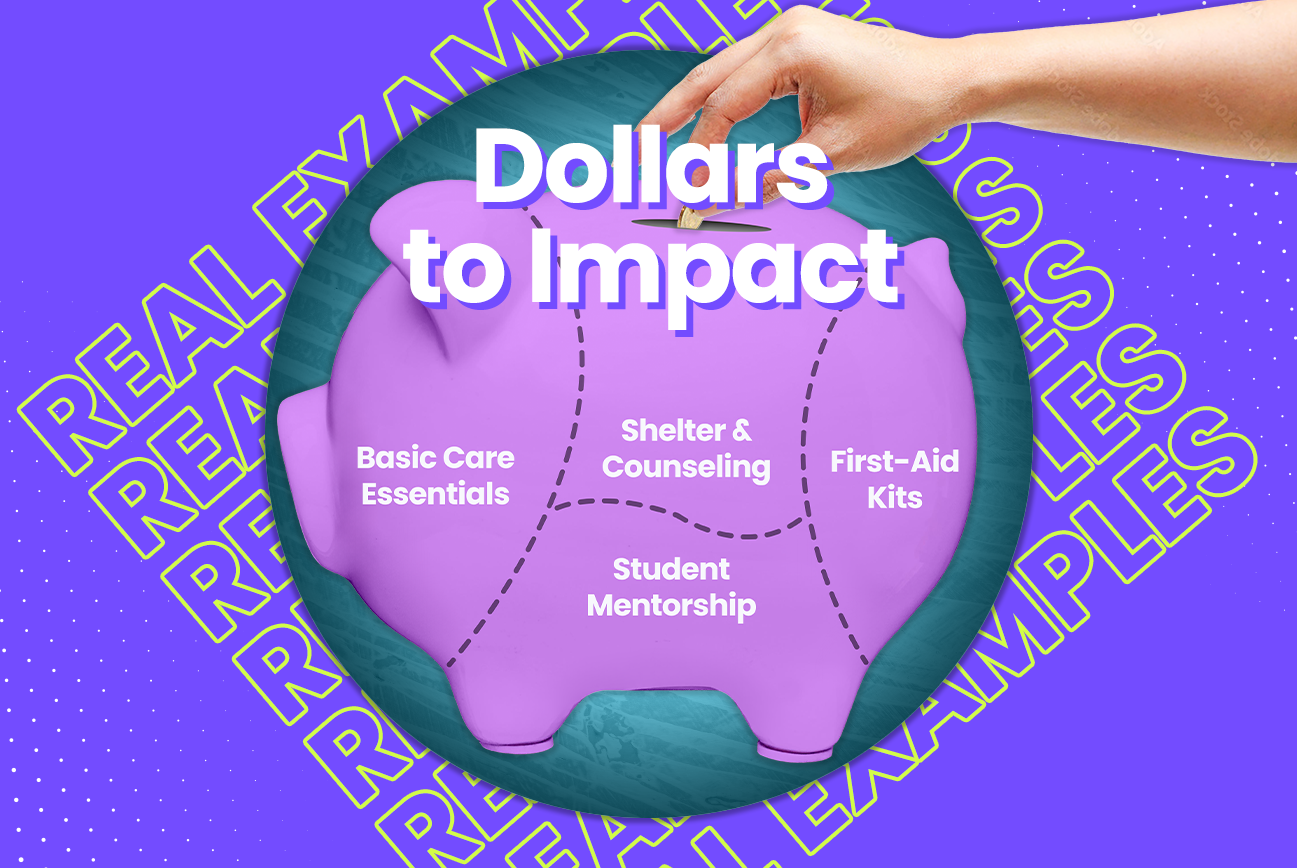One of the biggest challenges we face as nonprofit professionals is breaking down the complex nature of our work in a digestible and straightforward way for donors. That’s why many organizations compare a donor’s dollars to their impact.
Telling a donor that their gift of $20 provides 10 lunches for hungry children makes sense.
It shows the donor that their contribution has an immediate effect in making a difference. But, as you know, there’s no one-size-fits-all approach when it comes to fundraising. And while comparing dollars to impact is a powerful tool, it may not be appropriate for every situation or organization!
The efficacy of this approach has been debated by nonprofit professionals time and time again. As we mentioned, it’s a great way to help supporters feel like they’ve made a difference. On the other hand, there are questions about whether it accurately represents a nonprofit’s work and operations.
It’s a fine line to walk. But when used effectively, comparing dollars to impact can be a huge benefit to your fundraising efforts.
Stay focused on your story.
You know you need to tell a powerful story to fundraise effectively. And while comparing dollars to impact makes a donation more concrete, it can’t drive an emotional response on its own.
For example, let’s say you work at a women’s shelter in your city. Your appeal tells the story of Jane, a single mother who relied on the shelter’s services while escaping an abusive situation.
When it comes time to make the ask, compare a donor’s dollars to their impact on the story.
A donation of $50 provides a night of shelter and counseling to help a woman like Jane escape a dangerous situation.
This shows the donor that while their $50 may be enough money to cover a night’s stay and some services, what they’re really funding is the opportunity to help a real person in need.
LEARN MORE: There’s always a new story to tell.

It’s not a shopping list.
Too many nonprofits think comparing dollars to impact is a simple exercise. But you can do more harm than good if you don’t put enough thought into how a donor will perceive the impact of their gift.
Remember, your nonprofit is just the vehicle a donor uses to support a cause they care about.
So, it’s important to make sure the impact of a donor’s gift ties into your shared goals.
This time, we’ll use an animal rescue as an example. A poor example of dollars to impact could be:
Your donation of $20 will be used to buy a 10-pound bag of dog food.
Sure, if you’re running an animal rescue, you’re going to need a lot of dog food. But that’s not necessarily going to get donors excited to give.
Instead, consider something like:
Your donation of $20 will help us extend our adoption events by an hour so our animals have a better chance of finding a home.
Yes, the first example is more tangible than the second. And it seems like an obvious go-to based on your needs. But the second speaks to your mission more directly.
Think in the donor’s shoes. What’s more exciting?
A bag of dog food? Or a dog going home with a family that day, because the shelter can now hold longer adoption events?
LEARN MORE: Donors need to know the impact of every donation.

Use giving levels.
This is a great approach, especially if you are running a monthly giving program.
First, you will need to analyze past-gift data to determine appropriate giving levels for your organization. Then, you need to tell donors what can be accomplished with donations at those levels and develop a creative name for each tier to tie everything together.
For example, donors who give between $5 and $25 a month to an animal rescue can be called “care-takers.” Their donations fund basic care essentials, like kitty litter, flea baths, and doggy beds.
Donors at a higher level, who give between $50 and $100 per month can be known as “life-savers.” Their donations help pay for life-saving medical treatments, vaccinations, and rescue operations.
The key here again is to keep things focused on your mission. So, don’t choose generic names like “supporter” or “sustainer” for your giving tiers. The names and outcomes of gifts at every level should tie together with the impact of your mission.
LEARN MORE: How to segment your nonprofit’s audience.

Don’t compare yourself to other nonprofits.
Here’s a scenario:
Your organization operates a food pantry that provides meals to struggling families during the holidays. In a recent appeal, you asked donors to give $50 to provide a Thanksgiving meal to a family in need.
When you get home, you open an appeal from an organization with similar goals from the town you grew up in, hundreds of miles away. You’ve been supporting them for a while, and you’re glad they’ve maintained contact.
But there’s a problem.
You read through the appeal and come to the ask, which reads:
Please consider a donation of $20, which provides a Thanksgiving turkey to a family in need.
You ask yourself, “How can this organization be doing the same thing at such a lower cost?”
You felt good about your appeal. But now, you’re compelled to call your printer and stop the presses
For example, geography can play a role. The cost of living where you grew up may be much less than the city you live in now. So the organization in your hometown pays its employees less and has lower operating costs. They also have fewer people to service. All these factors make it cheaper to provide a Thanksgiving meal.
And remember, cheaper doesn’t always mean better. You re-read the appeal and realize that this organization essentially hands out frozen turkeys. However, your organization not only cooks the turkey but delivers it hot, with sides, and even a pie for dessert!
There are endless factors that can play into what a dollar does for an organization. So, when comparing dollars to impact, don’t worry about what other organizations are saying.
LEARN MORE: Achieving more with less amid economic uncertainty.
Be mission-focused and donor-centric.
As in all things related to your fundraising outreach, it’s important to keep your mission and what the donor can do to achieve it at the top of mind.
And this is especially true when comparing dollars to impact!
Remember, these comparisons are supposed to make an obscure dollar amount feel more tangible for your supporters. So, stay focused on what the donor can help your nonprofit accomplish with their gift of $X!
What can this look like for your nonprofit? Click here and talk it through with us!









